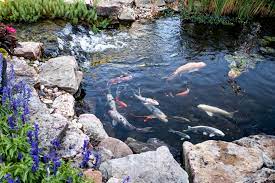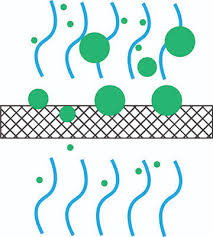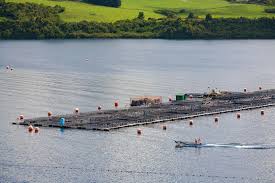What is fish farming?
Fish farming refers' raising fish commercially in tanks, ponds or other enclosures for the goal of producing food. Commercial fish farming has already introduced as a profitable business adventure throughout the world. Fish is a prominent source of food and protein. The need and price of fish and fish related products are also expanding rapidly, in accordance with rapid population growth. This is the foremost reason for developing this business around the world.
Why do we raise fish?
Fish is a truly healthy and nutritious protein which is promoted around the world. Commercial fish farming contributes almost half the seafood around the world and this is supposed to increase.
Fish is a gratifying and nutritious protein source that is also abundant in nutrients like omega-3 Fatty acids that promote our heart health and lowers our blood cholesterol level. Farming fish has been playing an important role in converging global protein demands.
Rising fish at home could initiate many beneficial opportunities today. Home raised fish could readily be sold for profit around the community or restaurants. There are people who want regionally raised fish from organic farms. It could also furnish you and your family with delightful fresh seafood. So, why not begin your own home-based fish farm?

How to start home-based fish farming?
To raise fish you will require some space in your backyard for mining a fish pond or place in your basement or anywhere if you desire to raise fish in containers. Fish can be raised in any sort of fish tanks, containers, and basins even in barrels.
All you need is some fundamental knowledge about fish, so I would recommend that you get as much knowledge as you probably can about fish farming. The more information you have the greater possibilities you will have to succeed in your home based fish farming venture.

What equipment do we need?
To start a modest home-based fish farm you will require to dig a fishpond or collect some fish tanks or bowls for indoor fish farming. Choose water from a reliable source, and you'll need some Pond Filter Media. Your local water supply will be delicate. Once you have your pond or container set up, get your fresh fish and some fish feed started.
For large scale pond based fish farmings, you would require some extra equipment. A list of equipment is listed below.
You will need the following for an industrial fish farm:
• Aquarium or fish tank
• Pumps
• Aeration Accessories
• Net or Seine Reels
• Handling and Grading Tools
• Water testing equipment
What should you concern before starting a fish farm?
It's desirable that after you have raised fish at home, you find aquaculture a successful business for you and choose to buy more possessions and start to extend your farming program. You will require raising capital, commercial tools, and more people to begin a large scale farm.
There are many ways you could accumulate the required funding and support from others to get started. Make a business plan and develop a probability report that assesses all your expenses and profits. This would help you to take bank loans and also to draw partners or investors.

If you are really passionate about fish farming, you should try to get as much support as possible. Try to accept a partner or work with different fish farm to reap experience at first. So, before you join the aquaculture business and start your own fish farming business, examine all potential factors and determine if fish farming is a suitable business for you. Below is a brief description that you may require learning about aquaculture.
What is Aquaculture?
Aquaculture is also termed as aquafarming, is the method of farming fish, crawfishes, mollusks, marine plants, algae, and other microorganisms.
What is Biological Ammonia Removal?
Wastewater from fish farms includes pollutants that can harm the drawing water resources. This is the main reason why the method of discharges is a constraint to assure the sustainability of fish production abilities.
Wastewater treatment for aquaculture will usually consist of methods for removal of significant pollutants such as organic matter, suspended solids, ammonia nitrogen, dissolved gases, and microbes.
Typical process units may include:
• Biological treatment
• Solids removal
• Disinfection
There is a broad range of resolutions that can be tailored to satisfy the highest standards and implement high quality, energy efficient, operationally friendly water treatment systems.
If you want to remove ammonia nitrogen from water, you can use bio ball, bio media, bio filter media and so on.
What are the primary Biofilters used for the BIOLOGICAL AMMONIA REMOVAL?
MBBR (Moving Bed Biofilm Reactor)
The Moving Bed Biofilm Reactor (MBBR). Bio filters are utilized as a water treatment unit in Recirculating Aquaculture Systems (RAS) for removal of ammonia (nitrification) and soluble organic matter created by fish. This sort of biological water treatment is extensively used in the treatment of sewage, and fish farming can be observed as a minor application of the technology. In general, the use of micro-organisms like bacteria, fungi or algae in bioreactors for the generation of useful substances is a different immense field of research. This area comprises for example fermentation methods for food production (beer, vitamins) or bio-medical application for production of vaccines and cell cultures.
K1 MICRO FILTER MEDIA
The Kaldnes 'K' series of media has been almost available for well over two decades, and it is extensively used in aquaculture as the source of the extremely effective biofilters claimed for heavily-stocked systems. But the fishpond filters intimate with K1 media and larger K3 media, but its application in aquarium filtration has been moderately limited.
Unlike conventional filtration media which bacteria is possession inside the stable media. The K1 filter mediaallow bacteria to be capable of colonies inside the media itself and admit fresh bacteria to be capable to colonize itself steadily on the filter media. Developing the K1 Mediabio-media is essential because a fragile eco-system is naturally emerging for the bacteria involved in the nitrification process. K1 Media contributes to the maximum operating surface area for the bacteria to colonize, more than other kinds of static media. It is this process which eliminates harmful ammonia and nitrite from the water.
Fine Bubble Diffusers
Fine bubble diffuser launches very small bubbles into a wastewater treatment process. The central principle behind using fine bubble diffusers over coarse bubble diffusers is that tinier bubbles result in higher bubble surface area per unit volume and higher oxygen transfer exchange. Fine bubble sizes vary from 0 to 3 mm.
Fine Bubble Diffuser Advantages
• High aeration efficiency
• High oxygen transfer efficiency
• Demand less energy to run (compared to coarse bubble diffusers)
• Readily adapt to existing basins (for replacements or upgrades)
• Lower active organic composite emissions (compared to coarse diffusers or mechanical aeration devices)
• Satisfy high oxygen requirements
Final Verdict
I hope this article was helpful for you, in leading you to the world of fish farming. Try to collect as much knowledge and sources as possible and get started with your own home based fish farming venture.
Want to unleash the opinions in you? We show you how. Click here to download our FREE eBook to discover more about fish farming. We would love to hear from you so, please visit our page or add your comments in the comment box below.








